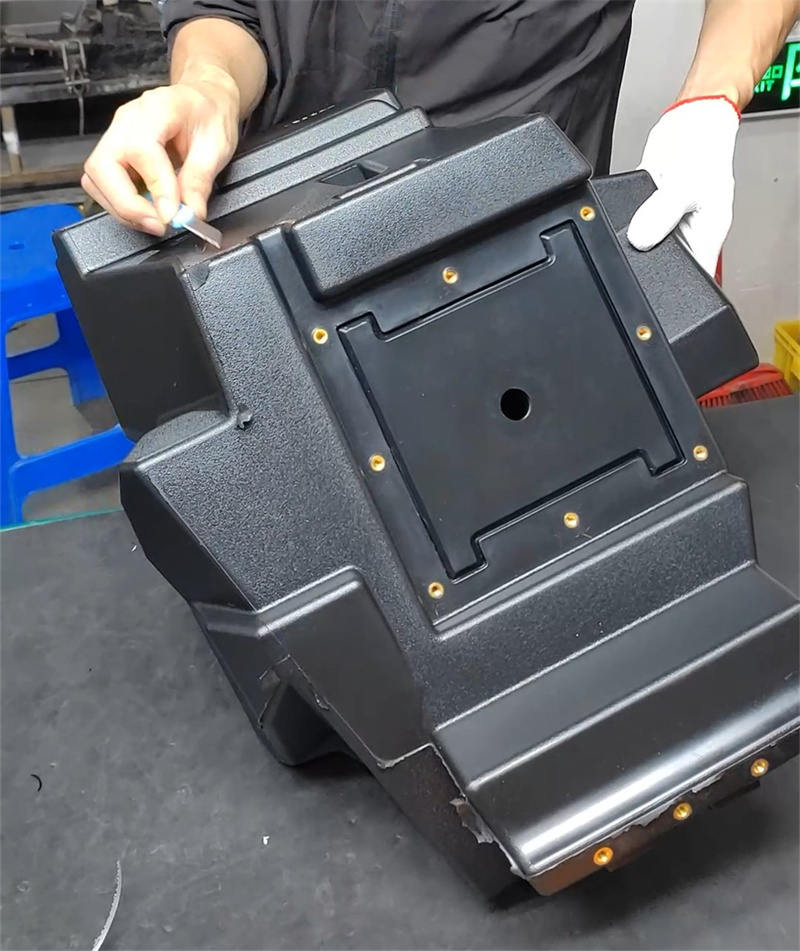Can Metal Inserts be Integrated in Rotational Moulding Process
 Apr 01,2025
Apr 01,2025

Can Metal Inserts be Integrated in Rotational Moulding Process
Metal inserts can be incorporated into rotational moulding to enhance the functionality, strength, or performance of the final plastic product. These inserts can serve various purposes such as providing attachment points for other components, increasing structural integrity, or enabling electrical conductivity. For example, in automotive applications, metal inserts might be used to create mounting points for interior components or to reinforce areas that need to withstand high stress.

How Metal Inserts are Added
There are several ways to add metal inserts in rotational moulding.
a. Insert Placement: Metal inserts are placed inside the mold before the plastic powder is added. The inserts can be in the form of nuts, bolts, hinges, or any other metal component that needs to be incorporated into the final product.
b. Adhesion: To ensure that the metal insert adheres to the plastic during the rotomoulding process, a special coating or bonding agent is applied to the insert’s surface. This coating promotes a strong bond between the metal and plastic.
c. Mold Design: The mold design must accommodate the metal inserts, ensuring that they are securely positioned during rotation. This may involve creating cavities or recesses in the mold to hold the inserts in place.
Benefits of Integrating Metal Inserts in Rotomoulding
Incorporating metal inserts into rotomoulded products offers several advantages:
a. Enhanced Strength and Durability: Metal inserts can significantly increase the strength and durability of rotomoulded products, making them suitable for applications that require additional support or load-bearing capabilities.
b. Improved Functionality: By integrating metal inserts, rotomoulded products can perform more complex functions. For example, a metal hinge can be added to create a rotating mechanism in a plastic container.
c. Cost-Effective: Using metal inserts in the rotomoulding process can be more cost-effective than manufacturing separate plastic and metal components and then assembling them.
d. Aesthetically Pleasing: Metal inserts can enhance the visual appeal of rotomoulded products, providing a sleek and professional look.
Challenges and Considerations
While integrating metal inserts in the rotational moulding process is feasible, there are some challenges and considerations to keep in mind:
a. Mold Design: Accurate mold design is crucial to ensure that the metal inserts are properly positioned and bonded to the plastic.
b. Coating Compatibility: The coating or bonding agent used on the metal inserts must be compatible with the plastic material and the rotomoulding process.
c. Heating and Cooling: The heating and cooling cycles during the rotomoulding process must be carefully controlled to prevent damage to the metal inserts.
Here at Light Venus, we have produced successfully diverse range of rotomouled products with molded-in metal insert to enhance functionality and performance. Browse our website to discover the details.
 Tel: 0086-13632687993
Tel: 0086-13632687993  Email: roto@lightvenus.com
Email: roto@lightvenus.com

 Home
Home Why Pros Use Rotomolding Process for Molding Plastic Speaker Enclosures
Why Pros Use Rotomolding Process for Molding Plastic Speaker Enclosures  You May Also Like
You May Also Like



 Tel
Tel
 Email
Email
 Address
Address








